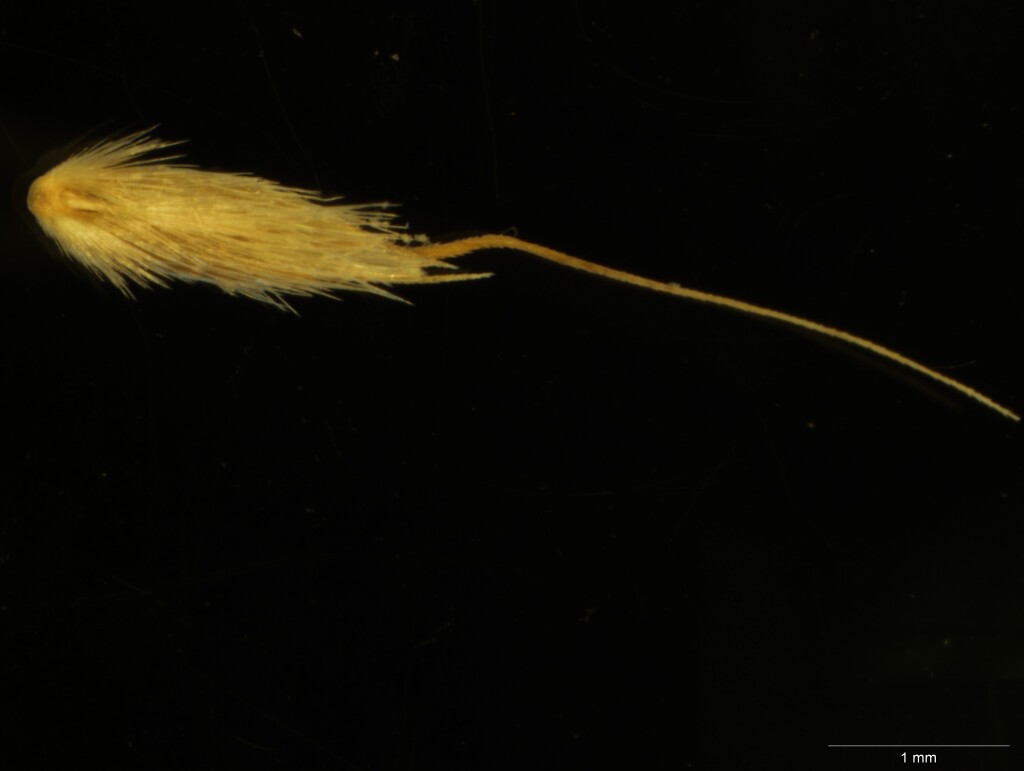Lachnagrostis aemula
(R.Br.) Trin.Tufted glabrous annual, culms ascending to erect, to 60 cm high. Leaf-blades to 20 cm long; ligules obtuse to acute, 1–4 mm long. Inflorescence a loose panicle, to 30 cm long, its base often enclosed by the upper leaf-sheath until maturity, then divaricately branched and breaking off below the lower branches. Spikelets 3.6–5.5 mm long (excluding awn), usually purplish (green when immature); glumes narrowly acuminate, the lower usually slightly longer, keeled toward the apex, smooth or scabrous along the keel; lemma 1.8–3 mm long, 4-toothed at apex, the outer pair of teeth to 1 mm long, lemma body covered with hairs in the lower three-quarters, awned from near the middle; awn bent, exceeding spikelet by 2–7 mm; palea c. three-quarters as long as lemma; rachilla bristle plumose; anthers 0.6–1.2 mm long.Leaf-blades flat or loosely folded, 3–10 mm wide. Flowers mainly Sep.–Jan.
LoM, MuM, Wim, GleP, VVP, VRiv, MuF, GipP, OtP, WaP, Gold, CVU, GGr, DunT, NIS, EGL, EGU, WPro, HSF, HNF, OtR, Strz, MonT, VAlp. Usually occurs in poorly drained sites, from sea-level to the sub-alps. Fairly common in eastern Victoria and on the basalt plains near Melbourne, rather rare in the west (e.g. Hamilton, Mortlake, Kanya near St Arnaud).
Lachnagrostis punicea var. punicea was formerly included in L. aemula (as Agrostis aemula var. setifolia (Hook. f.) Vickery.
Walsh, N.G. (1994). Poaceae. In: Walsh, N.G.; Entwisle, T.J., Flora of Victoria Vol. 2, Ferns and Allied Plants, Conifers and Monocotyledons, pp. 356–627. Inkata Press, Melbourne.
 Spinning
Spinning



